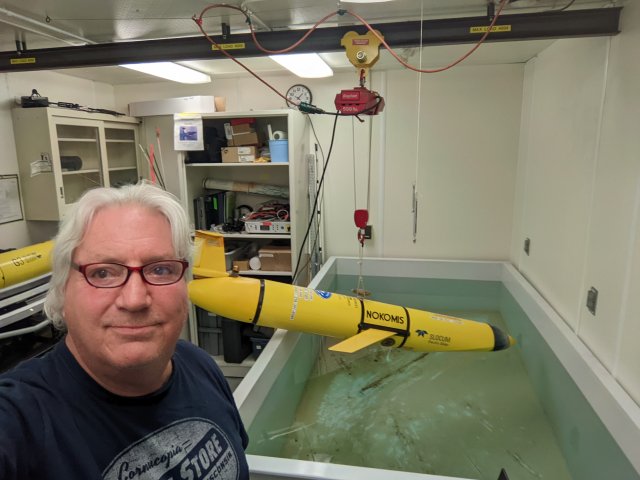Meet EPA Ecologist Tom Hollenhorst

Tom is a landscape ecologist who uses geographic information systems (GIS) and remote sensing technologies to study ecosystems and communities throughout the Great Lakes. Tom has been working in the St. Louis River estuary on various research efforts since 2008. He is currently working with a team to study community benefits and perceptions associated with Great Lakes Area of Concern mitigation projects. His team uses EPA’s autonomous underwater gliders to monitor the Great Lakes. Tom loves to get out on the water for any reason, especially fishing, canoeing and hiking. He also loves learning about local history and interesting characters from the area’s past.
Tell us about your background.
I have a B.S. in biology from St. Cloud State University and a M.S. in wildlife ecology from West Virginia University.
When did you first know you wanted to be a scientist?
I spent a lot of time near lakes and marshes where I grew up. The first bird nest I found as a young person inspired my interest in science and natural resource management. I’ve been interested in critters and ecosystems ever since.
What do you like most about your research?
Making maps with GIS!
How does your science matter?
Hopefully our science leads to better decision making and priorities. Geospatial technology provides the tools we need to detect changes in our environments and to adapt our monitoring and assessments accordingly. We can also use these same technologies for improved storytelling which helps convey the results of our work in a more understandable way to the public and to policy makers.
If you weren’t a scientist, what would you be doing?
I’d love to be a videographer or sound engineer, making documentaries and podcasts. I love all forms of storytelling.
What advice would you give a student interested in a career in science?
You can do anything you set your mind to. Never give up, meet and engage with interesting people, and have fun.
What’s your role in the Pickle Pond research project?
I’ve been helping with some of the data processing and the Pickle Pond website.
What do you think the coolest scientific discovery was and why?
I think the development and application of geographic information systems and data (from drones, to LiDAR, to GPS) has been amazing.
If you could have dinner with any scientist, past or present, who would you choose and what would you talk about?
I’d like to have dinner with Aldo Leopold and Rachel Carson and talk about the conservation of biodiversity and healthy ecosystems.
What do you think is our biggest scientific challenge in the next 20/50/100 years?
I believe climate change and the global loss of biodiversity are our greatest challenges. We owe it to future generations to tackle these issues with every tool we have right now.
Editor's Note: The opinions expressed herein are those of the researcher alone. EPA does not endorse the opinions or positions expressed.
